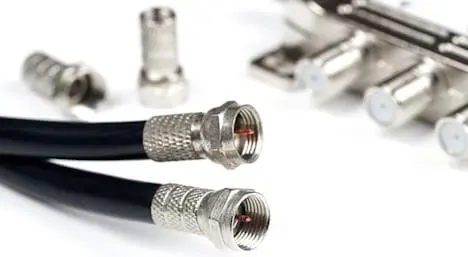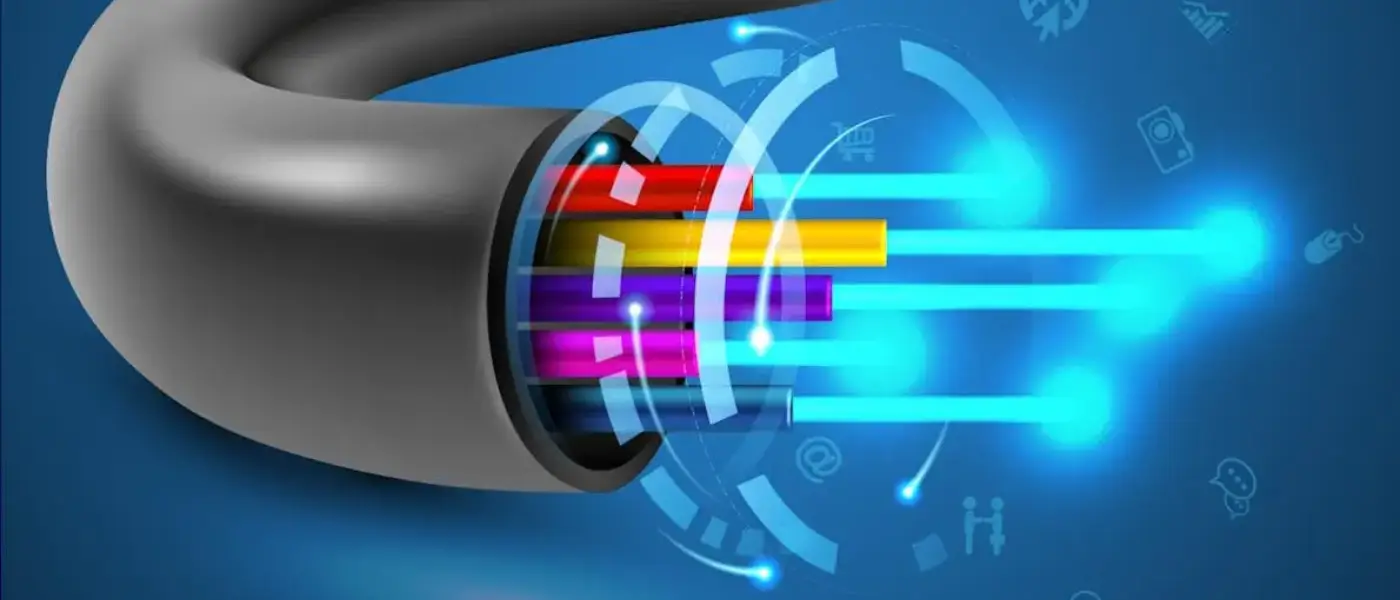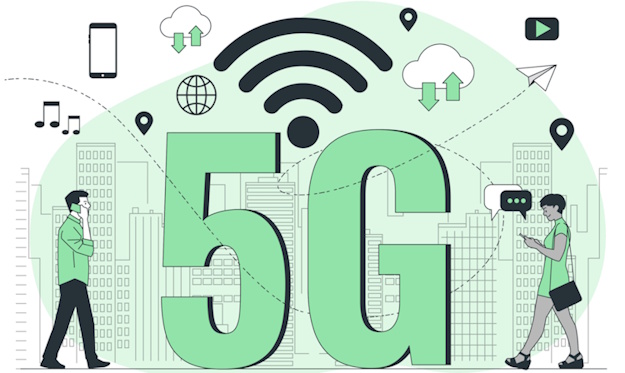Are you wondering about the differences between Cable Internet vs. FTTN Internet? Look no further! In this article, we will explore and explain the differences between these technologies and ultimately help you decide which is better for your Internet needs.
Cable Internet utilizes a coaxial cable network to transmit data, while FTTN (Fiber to the Node) Internet relies on fiber optic cables up to a certain distance from your home, with the remaining connection being made through traditional copper lines. The foundation for Cable Internet is DOCSIS (Data Over Cable Service Interface Specification), which is a global telecommunications standard, initially developed by CableLabs and other contributors, to allow for the transfer of high bandwidth data over the existing coaxial cables used primarily for television.
On the other hand, FTTN Internet leverages the use of fiber optic cables for a larger portion of the network, and the existing copper network for the remainder of the journey to your premises.
Within Canada, Rogers, Shaw, and Cogeco are primarily cable networks delivering Cable Internet while Bell leverages FTTN technology. By understanding these distinctions between Cable Internet vs. FTTN Internet, you can make an informed decision about which internet option best suits your needs.
Key Takeaways
- Cable Internet uses coaxial cable network for data transmission, while FTTN Internet relies on fiber optic cables up to a certain distance and then uses copper lines.
- Cable Internet offers high speeds and is widely available, making it ideal for streaming movies, gaming, and online activities.
- FTTN Internet provides faster and more reliable connections, utilizing fiber optic cables for faster data transmission.
- DOCSIS is a standard used by cable internet providers, enabling faster speeds, reliable connection, and wide availability.
History
Don’t worry, we will keep the history lesson short and provide links to resources for those who want to read more.
Cable Television originated in the United States in the mid to late 1940s to improve or enhance poor reception of over the air signals in mountainous or geographically disperse areas. By the 1950s, cable providers started to realize the value of the technology and that it could be leveraged to deliver signals from a great distance instead of it’s current role of boosting over the air signals. As more and more individuals could afford television, cable networks saw explosive growth to all corners of not only America, but also Canada.
Related: History of Cable Broadband
The history of FTTN Internet stretches a bit further back to 1875 when the telephone was first patented, which ultimately started an explosive growth of laying cables from end to end of each country to provide telephone service. Fast forward a lot of years to where most homes now have a copper line or more installed primarily to provide telephone service (or POTS as in Plain Old Telephone Service). Now, there’s the explosive growth of not only television but also Internet, so the obvious solution is to leverage the existing copper network to provide these services. However, there was a problem – the existing copper network didn’t have the bandwidth capacity to transmit and distribute these services at scale.
Related: Fiber to the x explained
What is Cable Internet?
In the History section above, we spoke about the explosive growth of the Internet in the 1990s, so the eventual solution to service this growing market was for the existing cable networks which were already providing television services to also provide data services to access the Internet. Basically, the same coaxial cable that provides a television signal to your home could also be used to provide high-speed internet access. This type of internet connection is widely available and popular among households.

The DOCSIS standard, initially introduced in March 1997, established a set of rules and guidelines for cable technology manufacturers and cable companies to unlock faster speeds, reliable connections and wide availability from their existing coaxial network. Since 1997, the standard has been updated several times and the most recent version, 3.1 introduced in 2013 dramatically improved the bandwidth that cable networks could provide to their customers.
Work on DOCSIS 4.0 specification is progressing very well and it was just recently announced that the main partners were finished working on the specs and the first deployment is being finalized. The ultimate aim is for DOCSIS to remain relevant even in a world increasingly dominated by fiber.
Now let’s finish our discussion on FTTN (Fiber To The Node) Internet – which offers its own unique advantages over cable internet.
What is FTTN Internet?
Going back to the History section, we ended on a cliffhanger – most homes had telephone service, and TV and Internet were growth services. How to service this growing market? The solution – run fiber cables from the core network of the provider (Bell in this instance) to a cabinet (it goes by different names including DSLAMs) which is located close to a neighborhood or business. Then, each home is connected to this cabinet via the existing copper cable – basically, the “last mile” (this is a term you’ll hear often and it basically means instead of knocking on each door, digging up lawns, driveways etc., the existing copper cable is leveraged for the last part of the journey to your home).
This hybrid setup combines the speed and reliability of fiber optics with the widespread availability of copper infrastructure. However, it is important to note that FTTN internet speeds can vary depending on factors such as distance from the node and network congestion. In comparison to cable internet, FTTN offers faster download speeds but may have slower upload speeds due to limitations in the copper connections.
| Pros | Cons |
|---|---|
| Fast download speeds | Slower upload speeds |
| Wide availability | Performance degrades over distance |
| Cost-effective | Reliant on existing copper infrastructure |
Now let’s explore how Cable Internet compares against FTTN in providing reliable high-speed internet connectivity.
Cable Internet vs. FTTN Internet
So, you now have a better understanding of the origins of Cable Internet vs. FTTN Internet, but the ultimate question you want answered is – which is better for my situation? Fibre To The Home (FTTH) technology easily surpasses both Cable Internet vs. FTTN Internet in terms of potential download and upstream speed, however this speed comes at a premium price which frankly isn’t worth it today because there are no applications that can take advantage of this speed. Even if you are working from home, an Internet speed of 50 Mbps down and 10 Mbps up is sufficient for most individuals.
Here are the major differences:-
- Cable Internet can offer significantly faster and higher speeds than FTTN Internet. FTTN Internet, because of the copper last mile, usually tops out at around 100Mbps; higher speeds require pair bonding which is basically combining multiple copper pairs to deliver higher speeds.
- FTTN Internet and the speeds you can receive depends on your distance from the cabinet. Again, because of the copper last mile, the further you reside from the cabinet, the electrical power of the signal over the copper line will degrade with distance, resulting in less speeds being delivered to your home or business.
- Cable Internet is a shared network, so within a neighborhood, you will basically share a large data pipe with your neighbors. The impact is that your Internet speeds can be slower and suffer delays from heavy bandwidth users. On the flip side, the speeds of cable Internet customers are not impacted by distance.
Summary
In summary, providers have made significant efforts to reduce the disadvantages between Cable Internet vs. FTTN Internet and there are millions of Canadians enjoying Internet delivered by both technologies. If you are in the market for Internet Services, either Cable Internet or FTTN Internet will deliver good download and upstream speeds, reliability for both technologies is mostly on par and the reach and availability of both technologies to most Canadians is fairly extensive, except for the 30% of Canadians who live in rural areas and don’t enjoy the same access as individuals living in more urban areas.
Given that the technology differentiation are mostly reduced, customers should be more focused on which provider delivers the best speeds, customer service and overall value for your budget.
Related: Best, Reliable and Most Affordable Internet Providers in Ontario for Under $75 per Month
Frequently Asked Questions
What is the maximum download and upload speed offered by Cable Internet?
Cable internet offers maximum download and upload speeds that are typically faster than those offered by FTTN internet. With cable internet, users can expect download speeds up to 1 Gbps and upload speeds up to 50 Mbps. These high speeds allow for seamless streaming, online gaming, and large file transfers. Cable internet is a popular choice for households that prioritize fast and reliable internet connections for their daily activities.
Can I use my existing cable TV wiring for Cable Internet?
Yes, you can use your existing cable TV wiring for cable internet. This means that you don’t have to worry about setting up new wiring in your home. By using the same cables, you can easily connect your modem to access high-speed internet. This convenience allows you to enjoy fast and reliable internet without any additional hassle or expenses.
Are there any limitations on the distance between my home and the cable provider’s network for Cable Internet?
There are limitations on the distance between a home and the cable provider’s network for cable internet. The signal strength of cable internet decreases as the distance increases, which can result in slower speeds or even no connection at all. It is recommended to be within a certain proximity to the provider’s network in order to receive reliable and fast internet service.
Can I get Cable Internet if I live in a rural area?
Yes, you can get cable internet in rural areas. Cable internet is a type of broadband connection that uses the same coaxial cables as cable TV to deliver high-speed internet. While availability may vary depending on your location and the reach of the cable provider’s network, many rural areas now have access to cable internet services. It provides reliable and fast internet connectivity, making it an excellent option for those living in rural communities who desire belonging through online connections.
How does FTTN Internet compare to other types of broadband connections, such as DSL or Fiber?
FTTN internet, also known as Fiber to the Node, is a type of broadband connection that utilizes a combination of fiber optic and copper cables. Compared to DSL, FTTN offers faster speeds and more reliable connections. However, it is not as fast or efficient as true fiber optic internet. Cable internet, on the other hand, uses coaxial cables and typically provides faster speeds than FTTN but may be less consistent in performance.
Conclusion
In conclusion, while both cable internet and FTTN internet provide high-speed connectivity, there are some key differences between the two. Cable internet utilizes a coaxial cable network and DOCSIS technology to deliver fast speeds, while FTTN internet uses fiber optic cables for faster data transmission. The choice between the two depends on factors such as availability in your area, cost, and desired speed. Ultimately, it is important to consider these factors before selecting the most suitable option for your internet needs.





